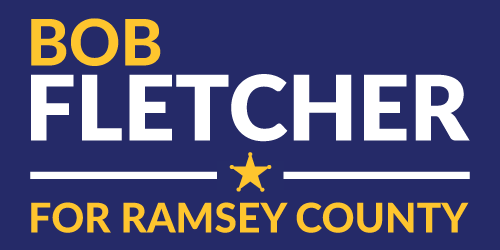INTRODUCTION
“Ensuring the development of gender and racially diverse leaders must be a priority. Role models in executive positions are essential. There are benefits of a diverse leadership team and workforce to the Sheriff’s Office and community.”
- Bob Fletcher
BACKGROUND
Women in police leadership roles bring valuable experience that strengthens organizations and fosters the development of the next generation of leaders. Likewise, a workforce that reflects diversity throughout its ranks increases community trust and facilitates the alignment of services with community expectations.
As Sheriff, Bob appointed the first African American undersheriff, led outreach efforts with the Southeast Asian community, and was an early adopter of hiring for diversity. For nearly 16 years, the Sheriff’s Office led in diverse hiring. For three decades, Bob has also partnered with communities of color and collaboratively problem-solved complex issues.
Today, however, at the Ramsey County Sheriff’s Office, there are no women serving on the interim sheriff’s senior leadership team. The chief deputy and all five undersheriffs are men. Moreover, racial and gender equity did not become a priority until it was an election year.
Law enforcement has historically been viewed as a “male profession.” Research notes the benefits of hiring woman in law enforcement. Women can:
Create a healthier police culture that is more reflective of communities served
Enhance responses to crime victims, including domestic violence and sexual violence
Improve community policing and relationships
More easily recognize crime victims, including those who have made repeated calls to police
Increase the reporting of crimes by connecting with victims
Improve workplace conduct and decrease harassment of women officers when in leadership positions
Statistically, women tend not to use excessive force. Women are also less likely to view aggressive tactics as necessary when responding to certain situations. In turn, this can help reduce complaints and litigation. Many of these same benefits are also true for hiring for racial diversity. That is why executive police role models who represent the community—both in terms of gender and race—are essential. Leaders do not tolerate any form of discrimination or bias. Experienced leaders make diversity a priority the first day on the job.
VISION
As Sheriff, I am committed to developing women and people of color to assume leadership roles, increasing diversity each year. To do this, we will:
Actively seek out and mentor leaders who represent our diverse population. The Sheriff’s Office will establish a leadership program to coach, develop, and train employees to assume leadership roles. This includes reviewing and revising strategies to ensure the best and the brightest people are selected to serve.
Start inclusive recruitment efforts. In addition to underrepresented communities, the Sheriff’s Office will engage individuals currently working in the human services field and other occupations and train them for new careers in police service. The Sheriff’s Office will also connect with middle and high schools, so youth can learn about careers in public safety.
Review selection processes. The Sheriff’s Office will analyze and remove obstacles in hiring and promotional processes that prove to be unfairly biased against women and people of color. Testing must be based on job requirements and community values.
Laura Goodman—retired Brooklyn Center deputy chief of police, former Minneapolis police sergeant, and former ombudsman for crime victims—contributed to this article.



